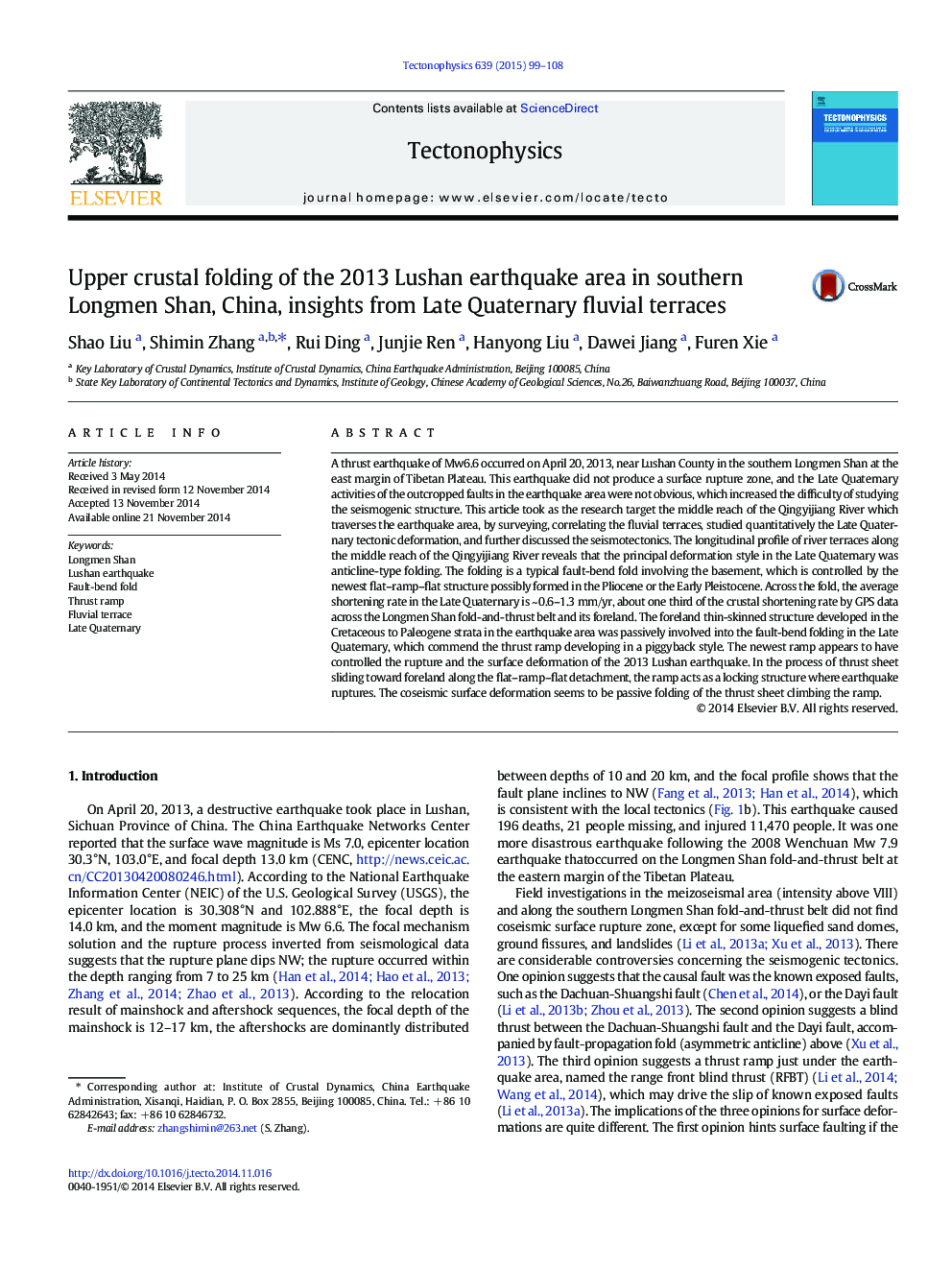| کد مقاله | کد نشریه | سال انتشار | مقاله انگلیسی | نسخه تمام متن |
|---|---|---|---|---|
| 4691775 | 1636752 | 2015 | 10 صفحه PDF | دانلود رایگان |

• We got the longitudinal profile of fluvial terraces of the Qingyijiang river.
• The recent deformation style in the Lushan earthquake area was fault-bend folding.
• The shortening rate across the fault-bend fold is ~ 0.6–1.3 mm/yr.
• The thrust ramp under the range front developed in a piggyback style.
• The newest ramp possibly controlled the rupture of the 2013 Lushan earthquake.
A thrust earthquake of Mw6.6 occurred on April 20, 2013, near Lushan County in the southern Longmen Shan at the east margin of Tibetan Plateau. This earthquake did not produce a surface rupture zone, and the Late Quaternary activities of the outcropped faults in the earthquake area were not obvious, which increased the difficulty of studying the seismogenic structure. This article took as the research target the middle reach of the Qingyijiang River which traverses the earthquake area, by surveying, correlating the fluvial terraces, studied quantitatively the Late Quaternary tectonic deformation, and further discussed the seismotectonics. The longitudinal profile of river terraces along the middle reach of the Qingyijiang River reveals that the principal deformation style in the Late Quaternary was anticline-type folding. The folding is a typical fault-bend fold involving the basement, which is controlled by the newest flat–ramp–flat structure possibly formed in the Pliocene or the Early Pleistocene. Across the fold, the average shortening rate in the Late Quaternary is ~ 0.6–1.3 mm/yr, about one third of the crustal shortening rate by GPS data across the Longmen Shan fold-and-thrust belt and its foreland. The foreland thin-skinned structure developed in the Cretaceous to Paleogene strata in the earthquake area was passively involved into the fault-bend folding in the Late Quaternary, which commend the thrust ramp developing in a piggyback style. The newest ramp appears to have controlled the rupture and the surface deformation of the 2013 Lushan earthquake. In the process of thrust sheet sliding toward foreland along the flat–ramp–flat detachment, the ramp acts as a locking structure where earthquake ruptures. The coseismic surface deformation seems to be passive folding of the thrust sheet climbing the ramp.
Journal: Tectonophysics - Volume 639, 12 January 2015, Pages 99–108